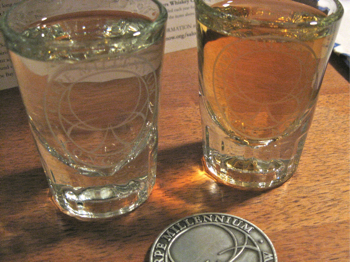Stewart Brand's Blog, page 61
December 23, 2013
“Climate Change and Us” Event Video Now Live
Rarely do we get to hear directly from the scientists who compile, analyze, and synthesize the most recent climate change data. On December 13th, swissnex San Francisco, in partnership with The Long Now Foundation, hosted an event that explained the Intergovernmental Panel on Climate Change’s most recent report, and what types of solutions would be needed to avoid pervasive climate shifts.
The evening started with a video highlighting the process of creating an IPCC report, and then a presentation from IPCC scientist Thomas Stocker on the conclusions of the report. The report divided the future into four possible scenarios, 2.0, 4.0, 6.0, and 8.0 degree shifts in mean global temperatures, allowing each country and policy maker to see the relative effects of each level of climate change. The news for even a 2.0 degree shift isn’t good, but the speakers did a great job of balancing the stark news with fruitful discussion of different avenues for addressing the causes.
The rest of the evening featured a diverse panel of experts on the report’s key takeaways for the scientist, the citizen, and the entrepreneur. Participants included former SALT speakers Saul Griffith and Paul Hawken, IPCC scientists Gian-Kasper Plattner and Thomas Stocker, and Susan Burns of the Global Footprint Network. After the event, swissnex hosted a reception in the venue to allow the audience to continue the conversation started on stage.
This embedded video is a 10 minute preview. The full video is available at Fora.TV

December 20, 2013
David Rumsey’s Historic Maps of San Francisco on Display at SFO
There’s no place like an airport to ponder the notion of place in both its microscopic and macroscopic manifestations – in its continuities, and its evolutions.
Next time you fly in or out of San Francisco’s International Airport, take a stroll down to Terminal 2 (post-security), where a series of historic local maps and drawings are on display. The images, on loan from Long Now Board Member David Rumsey‘s collection, document San Francisco’s transformation from sleepy backwater into lively boomtown during the late 19th and early 20th centuries.
San Francisco was at once improbable and inevitable. Much of the land at the northern tip of this hilly peninsula consisted of wind-swept sand dunes and was frequently blanketed with a cold fog during its summer season. But its location at the entrance to the largest natural harbor on the Pacific Coast, a series of auspicious events, and consecutive generations of citizens boldly reinventing their home on their own terms all combined to produce a city considered by many of its residents and visitors to be one of the world’s finest only fifty years after its founding. By all accounts, the transition of this sleepy village clinging to the shoreline of a sheltered cove to a boisterous, thriving metropolis was sudden. Charts, maps, and illustrated views document the remarkable pace of San Francisco’s early development in the latter half of the nineteenth century and its perpetual state of transformation throughout the twentieth century.
For those who would rather avoid the TSA, the exhibit is also viewable online. Every image includes a link to David Rumsey’s own online collection, where you’ll find detailed information about each map.

December 16, 2013
Wake up, Rosetta!
Almost ten years ago, the European Space Agency launched a probe with the goal of approaching and studying a comet. The probe was named Rosetta because, just as the Rosetta Stone allowed historians to piece together an ancient language and unlock a great deal of human history, the Rosetta probe will give us a better understanding of comets than we’ve ever had and possibly help us unlock a great deal of our solar system’s history.
The ESA invited Long Now to include one of our Rosetta Disks (in early prototype form at the time) on the probe. The Rosetta mission, therefore, serves a second purpose (after its comet research) as an off-world archive of several thousand human languages.
In search of its target, Comet 67P/Churyumov-Gerasimenko, Rosetta performed several slingshot fly-bys of our solar system’s inner planets, the last of which happened in 02009.
Rosetta has been in hibernation mode ever since, speeding its way toward Comet 67P. It needs to wake up in January to begin preparing for its August rendezvous and the ESA wants some help rousing it:
In a competition that opens today, ESA invites you to mark this important milestone in the Rosetta mission by sharing a video clip of you shouting “Wake up, Rosetta!”
You can upload your video clip and share it with the world via ESA’s dedicated Facebook page.
Be creative and imaginative – you can include friends, family, colleagues, members of your team, social clubs, and school groups, or even put together a flash mob to create a memorable video shout.
Creators of the two most popular videos will get to watch the Rosetta probe drop a lander named Philae onto the comet from mission control in Germany! Details and how to enter. You can keep up with the Rosetta mission on Facebook and Twitter.

December 12, 2013
A Whole New Catalog
Amidst a rising, churning sea of gadget blogs, device reviews, and un-boxing videos, Long Now board member Kevin Kelly’s new book takes a step back from the latest release. Cool Tools: A Catalog of Possibilities is actually a group effort – or “crowdsourced” as the (waning?) buzzword would have it – pulled together from 10 years’ worth of exclusively positive reviews on the Cool Tools blog for uniquely useful objects.
It lists and describes tried and true tools for making things like a house, yourself, or the world you want to see.
With the right tool you can invent new things.

December 11, 2013
3,700-Year Old Palatial Wine
The history of wine spans millennia: the ancient Romans considered the beverage a daily necessity, Phoenicians wrote the first textbooks on viticulture, and Egyptian pharaohs had wine cellars built into their burial tombs.
Now, recent archaeological findings from Israel promise to add new insights to our knowledge of wine drinking practices throughout the ages.
A team of researchers from George Washington University and Tel Aviv University have discovered what they believe to be an ancient wine cellar in the Northern Israeli city of Tel Kabri. Part of a buried Canaanite palace, the site is estimated to be about 3,700 years old.
Excavations of the space revealed forty large jugs – enough to hold about 2,000 liters (or more than 528 gallons) of liquid. Of course, their contents are long gone. But chemical analysis of the jugs’ inside lining revealed traces of tartaric and syringic acids: telltale signs of wine made from grapes. The analysis also revealed the use of several flavor additives such as honey, mint, cinnamon, and tree resin.
“Some of it was red and some of it was white, and with these additives, I imagine it would have a bit of a cough syrup taste,” said Assaf Yassur-Landau, of the University of Haifa, who helped discover the cellar. (LA Times)
The wine may not have appealed to a modern palate – but still, the research team suggests that it must have been the product of a sophisticated recipe: the composition appears to be uniform across all 40 jugs.
“This wasn’t moonshine that someone was brewing in their basement, eyeballing the measurements,” said Andrew Koh, a professor at Brandeis University, who did the organic residue analysis, in a statement. “The wine’s recipe was strictly followed in each and every jar.” (LA Times)
In fact, scholars believe that the Canaanite winemaking industry was already well-established by the time this cellar was put to use: they estimate that wine was made here as early as 05,000 BC. But while this cellar might therefore not be the oldest one around, the site still has plenty to tell us about the culture of wine drinking in this ancient town. For example, both the use of herbal infusions and the relatively limited quantity of jugs suggests that this was a special wine, intended for use at the palace. Further chemical analysis may tell us more about the wine’s composition, allowing us to learn something about the flavor preferences and wine-making techniques of 01,700 BC.
And who knows – we might even be able to recreate this ancient recipe and get an actual taste of what the upper classes drank all those centuries ago.

December 6, 2013
Meet Jennifer Colliau: Bar Manager of The Long Now Salon

Jennifer Colliau, Long Now Salon’s Founding Bar Manager. Photo by Catherine Borgeson
Long Now welcomes Jennifer Colliau, one of the Bay Area’s finest cocktail experts, as the manager of our new bar, cafe and social space: The Long Now Salon. The doors will open to our one-of-a-kind cafe/bar/museum/library at San Francisco’s Fort Mason Center in early 02014. So Jen is hard at work helping finalize everything for the space, working closely with our architect and design team.
When I asked the best people I knew in the bar industry who they knew with the background and ability to take on this role for us, Jennifer Colliau was the top suggestion that came back from everyone. It soon became clear she was uniquely suited for this role. We are honored to have someone who understands both the history and the future of beverages for our project.
– Alexander Rose, Long Now’s Executive Director
Jennifer is a veteran bartender and bar consultant in San Francisco who is a recognized authority on classic cocktails and contemporary mixology. She has been written about or written for publications such as The New York Times, Wired, 7×7, The Washington Post, and Imbibe Magazine. She also makes sensational non-alcoholic cocktails, which have been featured in Food & Wine, often using the artisanal syrups she produces for home and bar use with her company Small Hand Foods.
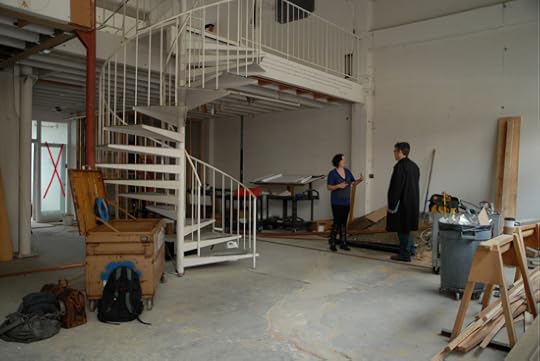
Salon construction at Fort Mason. Photo by Catherine Borgeson
I spoke with Jennifer about the bar design, classic cocktails, booze-less drinks, tea, time, ice, furniture, and vinegar, amongst other topics. We met at the construction site at Fort Mason where the Salon is taking shape.
New infrastructure for the bar-to-be is in place: trenches for power and plumbing lines, old walls gone, new walls framed.
Jen described what will come next: where the espresso machine will go, the place a barrel of whiskey will be suspended from the ceiling (finer points still being worked out), and of course the robots. There will be two of them, one behind the bar and a ‘chalkboard robot’ writing the day’s specials (and more) on the wall above.
And then we talked about ice. And freezing water it turns out is one of the hottest things in bartending right now. Jen hinted at an experimental ice-making technique she hopes to try at the bar. She says appreciating the importance of ice is one of the major drink-making innovations in recent years. “Once you know that you can’t unlearn it, you can’t go back. You have to have good ice.”
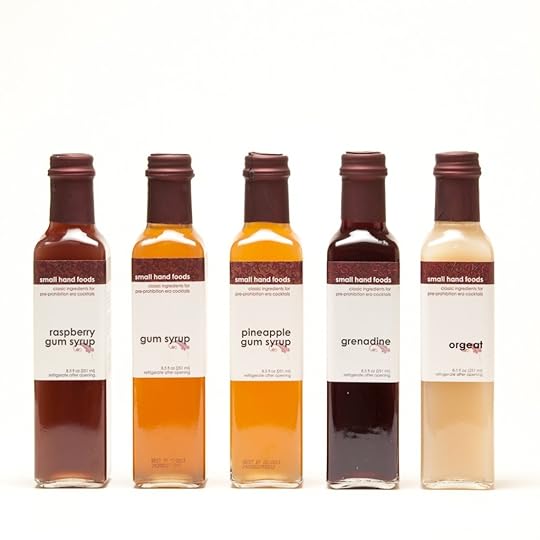
Photo by Small Hand Foods
Quality of ingredients is vital for Jennifer. She launched Small Hand Foods for the cause of making authentic Mai Tais and Jerry Thomas’s 1862 “Japanese Cocktail” recipe. A key element to both drinks, orgeat syrup, was only available as a mass-produced product made from almond flavoring rather than actual nuts.
So Jen researched, experimented and formulated her own orgeat, at first made in small batches for her own use. Soon numerous bartender friends tried it, and they had to have it, too. Upping production and figuring out all that was needed to make a commercial bottled product was another challenge, which she mastered.
Today Small Hand Foods produces pre-Prohibition era ingredients like grenadine and gum syrup that are widely used in the Bay Area and distributed to stores and bars in 5 states. Thanks to Jen’s careful reconstruction of these century-old syrups, extinct cocktails have been revived and others reestablished to their true taste profiles. As you’d imagine, her experience in cocktail deextinction pretty much cinched her getting the job as Long Now’s bar manager.
Long Now members can look forward to a longer interview with Jennifer in the upcoming Quarterly News later this month. But here’s a little excerpt….
Q: You’ve created some wonderful non-alcoholic drinks (like the Almond-Fennel Cooler), what’s your approach to those kinds of beverages?
A: I want them to be delicious. Too often those drinks are made just sweet and fruity. I’ve tried to explore other types– things based on tea, drier things… there are syrups you can make and others on the market that are amazing, taste-wise as good or better than the equivalent liqueurs, and with no alcohol. So I want to have those on hand to use in all kinds of drinks here.”
Q: I know you are still working on it, but what can you tell us about the drink menu for the bar?
A: Well, “Time” will be a theme throughout. You have Chartreuse which has been made since the 18th Century, for instance, and then types (or families) of drinks like Shrubs (drinks based on a syrup that includes vinegar) that are at least that old and again offer a non-alcohol option. These are fantastic ingredients with loads of history.
But I’m also looking at smart ways to make punches, another venerable drink family, which can take days to prepare correctly. But there are things we can do ahead of time so that our customers can enjoy it right away (without it being laborious or wasteful on our end). They get an authentic punch without the time constraints… it’s a bit of a time hack in other words.
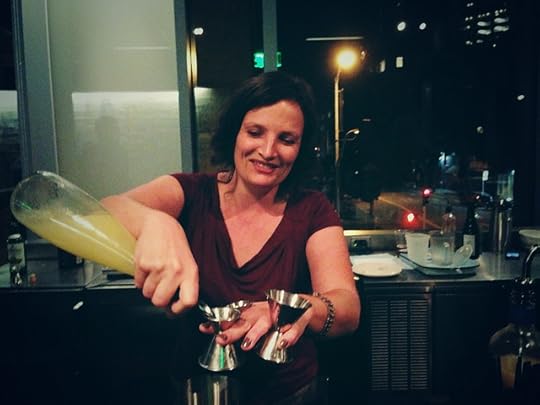
Tending her first Long Now reception at SFJazz. Photo by Mikl-em
Speaking about time, a conversation about cocktails with Jen is a free flowing chronological shuffle: one minute she cites a 19th Century Jerry Thomas recipe and the next a blog post on the precise science of cocktail shaking.
Her attention to detail started early. At age 9 she made every recipe in the “Candies and Confections” section of The Joy of Cooking. And tracked down obscure ingredients without the benefit of a search engine. Yes, we’ve found the right person to run the Long Now Salon.
Jennifer’s creativity with booze and her work with long-lost cocktail ingredients prove that she’s an ace at using the past to rethink the future. She’s the perfect choice to work at the Long Now bar.
– Adam Rogers, editor at Wired magazine and author of Proof: The Science of Booze
Welcome Jennifer! Now there’s a fittingly time-based exercise in patience for us all before we can taste the menu of drinks she is designing. The Salon’s exact opening date has not been announced, but it will be sometime in Spring 02014.
You can follow Long Now’s blog and Twitter feeds (@longnow, @longnowsalon) for updates on timing and more Salon news.

December 5, 2013
Richard Kurin Seminar Media
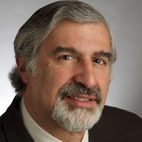 This lecture was presented as part of The Long Now Foundation’s monthly Seminars About Long-term Thinking.
This lecture was presented as part of The Long Now Foundation’s monthly Seminars About Long-term Thinking.
American History in 101 Objects
Monday November 18, 02013 – San Francisco
Video is up on the Kurin Seminar page for Members in HD and non-Members in SD.
*********************
Audio is up on the Kurin Seminar page, or you can subscribe to our podcast.
*********************
American objects – a summary by Stewart Brand
Figuratively holding up one museum item after another, Kurin spun tales from them. (The Smithsonian has 137 million objects; he displayed just thirty or so.)
The Burgess Shale shows fossilized soft-tissue creatures (“very early North Americans”) from 500 million years ago. The Smithsonian’s Giant Magellan Telescope being built in Chile will, when it is completed in 2020, look farther into the universe, and thus farther into the past than any previous telescope—12.8 billion years.
Kurin showed two versions of a portrait of Pocahontas, one later than the other. “You’re always interrogating the objects,” he noted. In the early image Pocahontas looks dark and Indian; in the later one she looks white and English.
George Washington’s uniform is elegant and impressive. He designed it himself to give exactly that impression, so the British would know they were fighting equals.
Benjamin Franklin’s walking stick was given to him by the French, who adored his fur cap because it seemed to embody how Americans lived close to nature. The gold top of the stick depicted his fur cap as a “cap of liberty.” Kurin observed, “There you have the spirit of America coded in an object.”
In 1831 the first locomotive in America, the “John Bull,” was assembled from parts sent from England and took up service from New York to Philadelphia at 15 miles per hour. In 1981, the Smithsonian fired up the John Bull and ran it again along old Georgetown rails. It is viewed by 5 million visitors a year at the American History Museum on the Mall.
The Morse-Vail Telegraph from 1844 originally printed the Morse code messages on paper, but that was abandoned when operators realized they could decode the dots and dashes by ear. In the 1840s Secretary of the Smithsonian Joseph Henry collected weather data by telegraph from 600 “citizen scientists” to create: 1) the first weather maps, 2) the first storm warning system, 3) the first use of crowd-sourcing. The National Weather Service resulted.
Abraham Lincoln was 6 foot 4 inches. His stylish top hat made him a target on battlefields. It had a black band as a permanent sign of mourning for his son Willie, dead at 11. He wore the hat to Ford’s Theater on April 14, 1865. When you hold the hat, Kurin said, “you feel the man.”
In 1886 the Smithsonian’s taxidermist William Temple Hornaday brought one of the few remaining American bison back from Montana to a lawn by the Mall and began a breeding program that eventually grew into The National Zoo. His book, The Extermination of the American Bison, is “considered today the first important book of the American conservation movement.”
Dorothy’s magic slippers in The Wizard of Oz are silver in the book but were ruby in the movie (and at the museum) to show off the brand-new Technicolor. The Smithsonian chronicles the advance of technology and also employs it. The next Smithsonian building to open in Washington, near the White House, will feature digital-projection walls, so that every few minutes it is a museum of something else.
Subscribe to our Seminar email list for updates and summaries.

December 2, 2013
A Special Gift for December Long Now Salon Donors
December is the time for giving both holiday gifts and donations to good causes. With that in mind, would you like to trade gifts with Long Now?
If you donate $100 or more to the Long Now Salon we will add a special Long Now shot glass to gifts you receive.
This offer is only good for new gifts of $100 or more received in December of 02013 while our supplies of shot glasses last. Of course you get the standard donation benefits as well. So for $100 you receive both a glass and a Long Now Challenge Coin (all donation levels are shown here).
Let us know if you are giving for a second time and we’ll make sure you receive the benefits for your cumulative gift amount.
This glass has only previously been available at small on-site events at Long Now’s San Francisco headquarters. It holds 2 fluid ounces, features our Carpe Millennium logo, and makes a great gift (though we’ll understand if you want to keep it for yourself). Tis the season of shipping delays, so donate early for the best chance to receive it by Christmas.
The Long Now Salon will be a gathering space for our members and the public that incorporates Long Now artifacts, a two-story crowd-curated library, and a state-of-the-art A/V system which will play ambient sound curated by Brian Eno. Serving inspired cocktails as well as artisan coffee and tea, the Salon will also feature a Brian Eno light painting and other unique features.
Open 7-days a week for the general public and home to a wide variety of smaller Long Now events, The Long Now Salon is another step in fulfilling our mission to make long-term thinking more instinctive and common, rather than difficult and rare.
The Salon renovation is progressing on schedule. No opening date has been announced yet, but it will be in the first half of 02014. Thanks again to everyone who has donated so far.

November 29, 2013
The Artangel Longplayer Letters: Stewart Brand writes to Esther Dyson
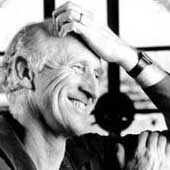
In July, Nassim Nicholas Taleb wrote a letter to Long Now co-founder Stewart Brand as part of the Artangel Longplayer Letters series. The series is a relay-style correspondence: The first letter was written by Brian Eno to Taleb. Taleb then wrote to Stewart Brand. Brand’s response is now addressed to Esther Dyson, who will respond with a letter to a recipient of her choosing.
The discussion thus far has focused on how humanity can increase technological capacity to meet real global needs without incurring catastrophic unintended consequences.
Dear Esther,
Ghosts don’t exist, but ghost stories sure do. We love frightening ourselves with narratives built around a horrifying logic that emerges with the telling of the tale, ideally capped with a moral lesson.
“The Monkey’s Paw” is a three-wishes fable where innocent-seeming wishes go hideously astray. A mother mad with grief wishes her dead son alive again. When the knock comes at the door, the father realizes that the thing knocking is horribly mangled and rotted, and he uses the third wish to destroy it. Powers that appear benign, we learn, can have unintended consequences.
One of the classics is Mary Shelley’s Frankenstein: or, The Modern Prometheus, born in part from her belief in “the Romantic ideal that misused power could destroy society.” (Wikipedia) The ambitious scientist Victor Frankenstein, trying to create life, creates a monster. “I saw the pale student of unhallowed arts,” Shelley recalled, “kneeling beside the thing he had put together. I saw the hideous phantasm of a man stretched out, and then, on the working of some powerful engine, show signs of life, and stir with an uneasy, half vital motion.“ We shiver, and we learn the fruits of hubris. The monster kills Victor Frankenstein’s friends and family and blights his life.
What happens when we apply stories like these to thinking about complex issues such as how to deal with new technologies? Nassim Taleb advises that we watch out for what he calls the “narrative fallacy:”
The narrative fallacy addresses our limited ability to look at sequences of facts without weaving an explanation into them, or, equivalently, forcing a logical link, an arrow of relationship, upon them. Explanations bind facts together. They make them all the more easily remembered; they help them make more sense. Where this propensity can go wrong is when it increases our impression of understanding. (The Black Swan, p. 43)
For illustration, Taleb notes how the bare facts “The king died and the queen died” are much more compelling, and perhaps misleading, as a story: “The king died, and then the queen died of grief.”
Daniel Kahneman has dissected our cognitive bias for simple story over complex facts. Elaborating on Taleb’s idea of the Narrative Fallacy, he writes:
The explanatory stories that people find compelling are simple; are concrete rather than abstract; assign a larger role to talent, stupidity, and intentions than to luck; and focus on a few striking events that happened rather than on the countless events that failed to happen. Any recent salient event is a candidate to become the kernel of a causative narrative. Taleb suggests that we humans constantly fool ourselves by constructing flimsy accounts of the past and believing they are true. (Thinking, Fast and Slow, p. 199)
Such flimsy accounts and foolishness are the norm. We haunt ourselves with ghost stories, often in the service of bigger simplistic narratives such as “The Tragedy of Human History” or “The Greed of Business Titans” or “The Hubris of Arrogant Scientists.”
The habit of viewing with alarm and condemnation yields the satisfaction of a closed system, always self-coherent, but it has to suppress curiosity, because, as Kahneman points out, “it is easier to construct a coherent story when you know little, when there are fewer pieces to fit into the puzzle. Our comforting conviction that the world makes sense rests on a secure foundation: our almost unlimited ability to ignore our ignorance.” (Thinking, p. 201)
In this letter I want to make the case for an opposite approach, a non-narrative embrace of complexity through close observation of how skeins of related evidence-based arguments play out over time.
Conveniently, the previous correspondents in the series of letters you are joining (Brian Eno and Nassim Taleb) wrote about matters (nuclear power and GMOs) that I studied in some detail for my book, Whole Earth Discipline (02010). To make his general point about always defaulting to the longer-term frame of reference in order to think most usefully about something, Brian notes that “Fukushima” has become a classic instance of the “lurching from one panic to another” that characterizes short-term thinking, with the result that some nations are turning away from something which offers the best hope of averting the long-term calamity of climate change, nuclear power.
To my eye, the ghost in the Fukushima ghost story is the belief that all radiation is harmful. Horribly, we can’t see it or smell it, but it can kill us. (In fact, radioactivity is so easy to detect accurately with dosimeters that no deaths or illness resulted from exposure at Fukushima.) The ghost replies, “I’ll haunt you forever! Even low dosage will kill you with cancer sometime in the future.“ (In fact, life evolved from the very beginning to manage the low dosage of background radiation, and none of the many long-term epidemiological studies of moderate increases in radiation have detected measurable cancer effects.)
Nassim’s letter takes on the important mission of helping develop antifragility at the societal level. He encourages widespread small-scale tinkering, where failures remain local but successes can be adopted widely, versus top-down large-scale tinkering that can unleash systemic threats that are very Black Swans indeed. He cites GMO crops as such a top-down threat.
I agree profoundly with his goal, and not a bit with his example. The mechanism for GMOs is the moving of a gene from one species to another. This has been going on at a massive scale among all microbes (meaning, most of the biomass on Earth) for 3.8 billion years; it goes on hourly and massively in our own guts. It is one of the most bottom-up mechanisms in all of life. Human bioengineers have been doing modest versions of the same thing since the mid-seventies. The technique is now the engine for medicines such as insulin and artemisinin, foods such as cheese and beer, and crops such as corn, soybeans, and sugar. Countless tons have been consumed by billions of humans. Exactly no harmful effects have been proven, despite constant efforts to find some.
Nassim vaunts “mother nature” as the wise source of safe small-scale tinkering. There are indeed Black Swans—civilization-scale systemic threats—that have come from genetic tinkering. Every one of them was concocted by mother nature—bubonic plague, the 1918 flu, AIDS, malaria, smallpox, and dozens more. No new diseases whatever have come from human laboratories. Cures have, however. Smallpox is gone now, thanks to top-down efforts by science and government. Guinea worm is about to be eradicated permanently. Hopes are high to do the same with polio and even malaria. In the domain of disease, science is antifragile.
The same is true in agriculture. The science of genetic engineering is far more precise than blind selective breeding, and for that reason it is even safer.
I think that the ghost in the GMO ghost story is a misplaced idea of contagion. Any transferred gene, people imagine, might be like a loose plague virus. It might infect everything, or it might hide for years and then emerge catastrophically. But genes don’t work like that. They are nothing but extremely specific tools, operative in extremely specific organisms. A gene is not a germ and cannot act like a germ.
Nassim evokes what he calls a “non-naive Precautionary Principle” to warn about all manner of human innovation. Daniel Kahneman takes an opposing view:
As the jurist Cass Sunstein points out, the precautionary principle is costly, and when interpreted strictly it can be paralyzing. He mentions an impressive list of innovations that would not have passed the test, including “airplanes, air conditioning, antibiotics, automobiles, chlorine, the measles vaccine, open-heart surgery, radio, refrigeration, smallpox vaccine, and X-rays.” The strong version of the precautionary principle is obviously untenable. (Thinking, p. 351)
To achieve Nassim’s goal of an antifragile society, I think we can build on his core idea, which is that, over time, whatever is fragile inevitably breaks, while systems that are antifragile use time to grow stronger. The question is, how do we mix innovative boldness with caution in a way that gradually reduces fragile ideas and systems while promoting antifragile ideas and systems? How do we think ahead without paralyzing ourselves with ghost stories, or indeed with any simplistic narrative?
I‘ve been proposing a process I call “Cautionary Vigilance.” It’s a form of issue mapping. Any new technology, any innovation, can be thought through by dissecting the full range of its complexity into an array of specific arguments whose outcomes are determined by evidence that emerges over time. The narrative fallacy is headed off with the open-minded embrace of complexity. Paralysis is headed off by focussing on arguments that can have outcomes. Policy can be guided toward antifragility by ongoing net assessment of the aggregate direction of the arguments over time. Are the worries proving out more than the hopes?
With nuclear power, radiation is just one of many issues to bear in mind while assessing benefits and harms. There are matters of air pollution; of greenhouse gases; of cost; of new designs; of fuel type; of waste storage; of weapons proliferation; et cetera. The list is large but finite. The same goes for GMOs. Along with the health questions are considerations of productivity and land sparing; of pesticide use; of herbicide use; of no-till agriculture; of medicinal foods; of more precise techniques (synthetic biology); of adaptive weeds and pests; of gene flow to other crops; et cetera.
The arguments that interest nuclear engineers now are completely different from the arguments of the 1950s, when the technology was first developing, but the public discourse has not kept up. Likewise with GMOs. Agriculture professionals who had one set of worries and hopes in the 1990s have a quite different set now, but the public debate seems stuck in 1996. “Time,” Nassim noted, “is a bullshit detector.” As evidence accumulates, discussion moves on.
Ideology and ghost stories are timeless. What I’m proposing is the difference between fiction and nonfiction, between imagination and reporting. The questions about What-Might-Happen convert, over time, into answers about What-Happened. As that occurs, our hopes and worries about What-Might-Happen should shift, building on the new baseline of What-Happened.
Esther, you (and your father Freeman and brother George) have been exceptionally insightful about emerging technologies and ways to think ahead about them in a long-term framework. You’ve now read my thoughts, Nassim Taleb’s, and Brian Eno’s.
How do you think responsible foresight works best?
Fondly as ever,
Stewart
Future letters will be published on the Longplayer site, the Long Now blog and Artangel’s site. Please leave comments, if you have them, on the Longplayer site.

November 27, 2013
Reinventors Roundtable on Longpath Thinking
On November 20th, Long Now Executive Director Alexander Rose took part in a Reinventors Roundtable discussion called “Reinvent Longpath Thinking.” Another participant in the discussion, Ari Wallach, coined the term Longpath as a framework for thinking long-term and in his consultancy work, encourages clients to imagine where they want to be a decade or more into the future.
The discussion centered on a topic near and dear to Long Now – making longer-term thinking more common. All the participants brought great questions and perspectives. Below are some highlights, but you can watch the whole thing at Revinventors.net.

Stewart Brand's Blog
- Stewart Brand's profile
- 291 followers







